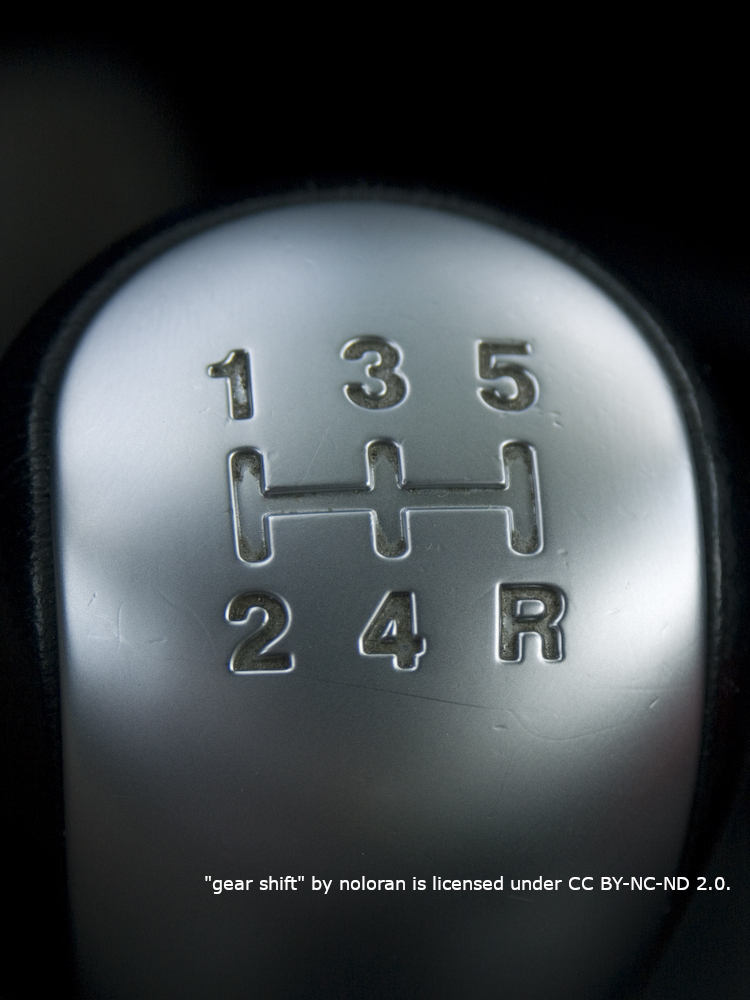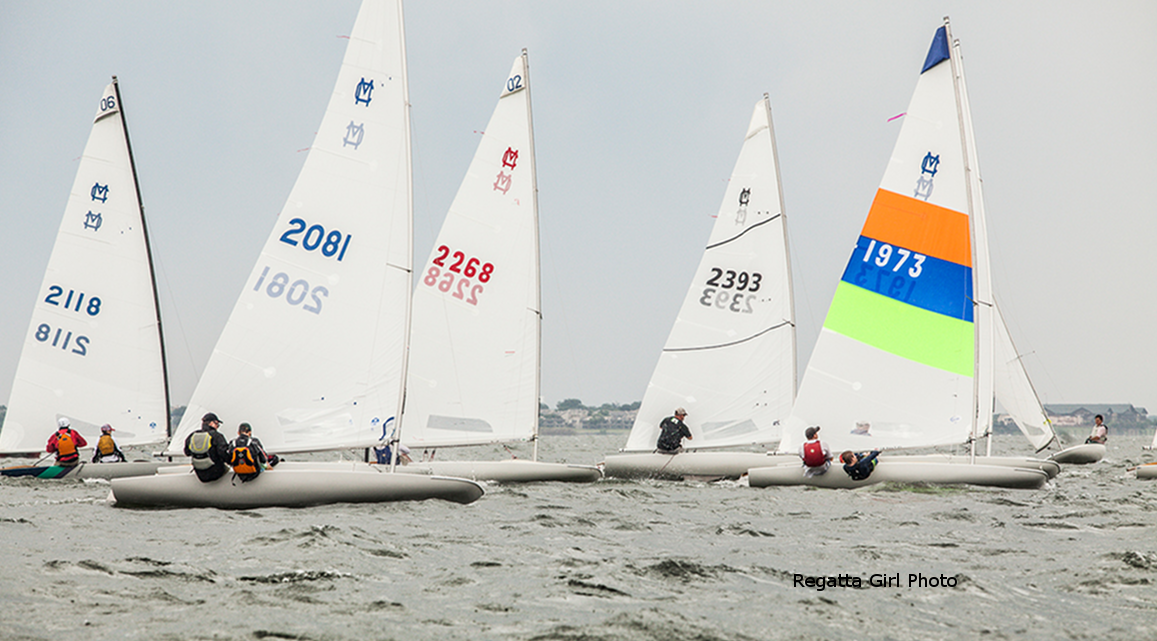Top sailors know how to “change gears” to adapt to the needs of the boat. In this post, we discuss three primary gears for sailing upwind. In a future post, we’ll discuss using these gears in different wind and wave conditions.
This post relies heavily on understanding sail shape. For more, see our series Shaping Your Mainsail and our post Sail Shape Upwind – Six Things to Look For.
Why Cars and Sailboats Change Gears
Using gears in sailing is similar, but not identical, to using gears in an automobile. Cars change gears to maximize performance in various conditions. No one would buy a car with only one gear, and you shouldn’t sail in just one gear. In this article we’ll focus on three primary gears.
- Low gear. Cars use low gear to get maximum power (technically, torque) when accelerating or climbing a grade. In sailing, we could call this gear “Acceleration/Footing.”
- Medium or high gear. Cars use these gears for cruising efficiently while retaining enough power (torque) to re-accelerate or climb small grades. In sailing, we’ll call this “Max VMG,” since it gives you the best combination of speed and pointing in most conditions. For more, see our post on Velocity Made Good (VMG).
- Overdrive. In cars, this is a very high gear. It’s used when cruising at high speed, with no need for re-acceleration or climbing grades. In sailing, the analogy is to pointing high in flat water, so we’ll call it “Pointing.”
Accelerating/Footing
Use this at the start, after a tack, in waves, or any time boat is slower than it should be for the conditions.
Accelerating or footing calls for a fuller sail shape, a wider angle of attack, flat or open leech, and attached flow over the entire sail.
- Bear off and ease main slightly.
- Luff telltales streaming on both sides of the sail. Some sailors say to press the windward luff tales to the sail.
- Upper leech flat or slightly twisted open. Leech ribbons streaming.
- Slightly less vang tension than you would use for the wind speed.
- Outhaul slightly looser than you would use for the wind speed.
- Try using a little cunningham to get the draft slightly forward, which results in less side force.
- Hike hard against the extra power!
Max VMG
This gear gives you the best combination of speed and pointing. Use it when the boat is up to speed and conditions allow you retain that speed with minimal adjustment – relatively flat water and steady wind.
Max VMG calls for a flatter sail shape, a narrower angle of attack, a slightly closed leech, and a slight stalling of air flow on the windward side of the sail.
- Tight mainsheet
- Upper leech parallel to boom.
- Leech ribbons active – alternately flowing and disappearing behind sail
- Steer higher until windward luff telltales lift about 45 degrees from horizontal.
- Tension vang and outhaul to regulate power. You want to be hiking hard without having to steer too high or ease the main too much.
- Tension cunningham as the wind builds to keep draft at 40-50% aft.
Pointing
Use this gear sparingly when boat is up to speed in ideal conditions – steady wind and flat water. Be ready to change gears back to Max VMG or Accelerating/Footing if speed drops. Don’t get caught in point mode when the boat is slow.
Pointing calls for a flat sail and flat entry, a narrow angle of attack, closed leeches, and slightly more stalling of air flow on the windward side of the sail.
- Tight mainsheet
- Upper leech hooked in slightly.
- Leech ribbons curled behind sail and streaming only occasionally.
- Steer higher until windward luff telltales lift about 90 degrees from horizontal. Avoid pinching – steering so high that the windward luff tales are chaotic, and the luff of the sail is soft.
- Tension vang and outhaul to regulate power.
- You want to be hiking hard without needing to pinch or ease the main too much.
- A little bit of hook in the lower leech will aid pointing.
- Tension cunningham to keep draft at 40-50% aft. The entry shape of the sail should be flat. This makes for a narrower groove, but better pointing.
Related Content
Do You Have the Right Touch? Thoughts from Bruce Goldsmith. “Touch” is the ability to change gears.
Shift into Your Point Gear – Greg Fisher in Sailing World





